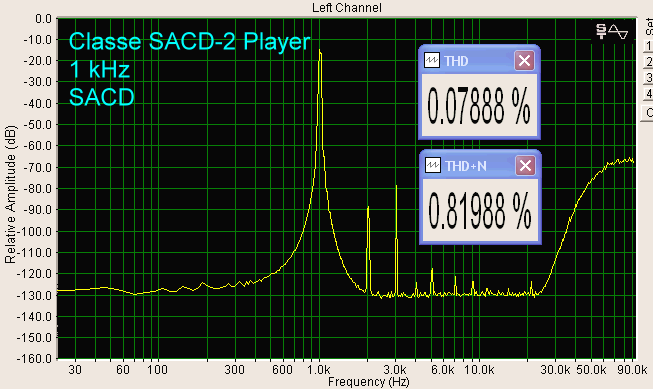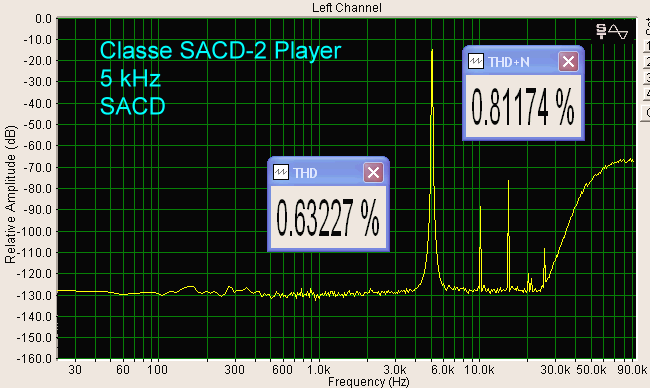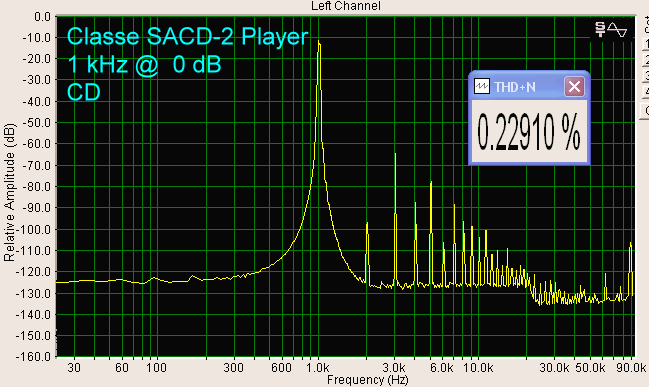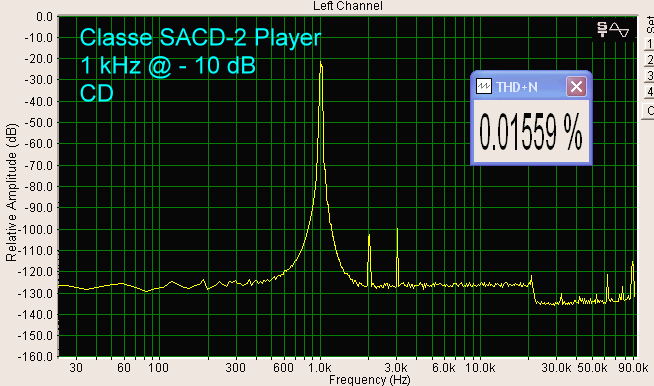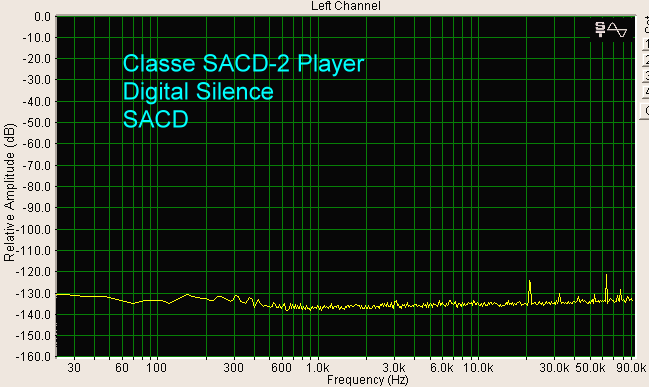|
|||||||||
|
Introduction Well, the rumors are premature, because SACD is alive and well. Along with new recordings, studios seem to be going back to their archives and putting master tapes of old recordings onto SACD. This includes not only recordings that started out as vinyl LPs, but some older CDs that were recorded digitally as well. Telarc recently announced SACDs of digital recordings that were made at 50 kHz using SoundStream technology. Since 50 kHz had to be down-sampled to 44.1 kHz, there were artifacts introduced. With the SACD versions, no such artifacts are there, plus you have the additional frequency response. They sound terrific! Although SACD and DVD-A are coincident with the trend to have multi-channel sound (in home theaters), there are still many aficionados out there who are sticking with two-channel music. There is indeed a bit of a strange sensation, particularly with classical music, when one is placed sonically in the middle of the orchestra with 5.1 sound. The SACD-2 Classé has opted, with the SACD-2 player, to design it as a two-channel player rather than 5.1. The reasons are that - as stated above - many audiophiles still focus on two-channel music, and SACDs have a two-channel track along with the 5.1, or in many cases, are two-channel recordings. Secondly, by staying with two-channels, Classé could focus the dollars on making those two-channels have spectacular playback.
The SACD-2
has three stereo DACs. Two are used for the XLR balanced analog audio outputs (one stereo DAC for each of the two channels), and one is used for stereo playback
through the unbalanced analog audio RCA outputs. If they had used these kinds of parts
for 5.1, the player would have been quite a bit more expensive, and $8,000
is certainly no chump change. Why only SACD and not DVD-A? Classé wanted to focus on one format and do it without compromise. The player has massive build quality, with a thick aluminum chassis. The front panel is very simple, with basic controls. When the disc drawer is opened, it does so with authority, and closes solidly. The front panel buttons offer Open/Close Drawer, Play, Stop, Skip Track Forward, Skip Track Reverse, and SACD/CD. If the inserted disc has both SACD and CD layers, you need to choose which one you want to play. If it is SACD only or CD only, then the player will automatically set itself for the proper decoding. The LCD panel has the usual items including track number and time played. There is also an indicator for selecting upsampling to 48 kHz, 96 kHz, 88 kHz, and 192 kHz. This is primarily for the purpose of reducing noise rather than improving the quality of the sound. I left the upsampling feature off during bench tests. The rear panel is simple, with a pair of XLR and RCA analog audio outputs, along with XLR and RCA digital outputs, and a trigger socket. The Power On/Off toggle is on the rear panel as well, so Classé assumes you will leave the unit powered on all the time. The grounded AC Power Cord is detachable.
The remote control is routine, except that it is routed out of a single piece of aluminum. You need a hex wrench to remove the back for battery changes.
Listening I tested the Classé SACD-2 with a Balanced Audio Technology VK-5i Preamplifier, McIntosh MC-602 Power Amplifier, Carver Platinum Ribbon Speakers, Thiel CS2.4 Floor-Standing Speakers, and Velodyne F-1800 Subwoofers. Cables were Nordost, BetterCables, and Slinkylinks. I have been listening to the SACD-2 for several months, and the sound is just superb. After reviewing the Classé CDP-10 CD Player, I was expecting greatness from the SACD-2, and I certainly was not disappointed. CDs sounded pretty much like they do with the CDP-10 (which is as good as it gets), but it is SACDs that the SACD-2 is intended for, and what a sound!
One of my favorite new SACDs is
I was able to hear a difference between the CD and SACD layers, but it is difficult to put into words. Perhaps "smoother" is the best choice, but it took about 10 seconds to switch between layers since the player has to be put in Stop mode before switching, so I was not really able to do an instantaneous "A" vs. "B" comparison. The edges of the sound were not different between CD and SACD, but rather, the body of the sound. If you look at the bench test results below, you can see that there is some audible band noise floor "hash" in the CD tests that is not present in the SACD tests. Since the spectra represent an analysis of all the frequencies present in the signal at a certain instant, this CD noise floor hash might be deteriorating the music signal ever so slightly, making it sound just a bit less smooth than the SACD signal, which does not have the hash in the audible band. Somewhere down the road, we need test discs recorded natively in CD, SACD, and DVD-A, simply feeding the same microphone in the recording studio to three different recorders. I think many recordings available in several formats are recorded in one format and then converted to the others. That is not a fair comparison test. A few of the many other SACDs I used with the SACD-2 include Stravinsky's The Firebird (Telarc SACD-60039), Rachmaninov's Vespers (Pentatone PTC-5186), and Tchaikovsky's 1812 Overture (Telarc SACD-60541). Of all the discs, the Hiromi recording was the most distinguishable between the CD layer and SACD layer. On the Bench For these tests, I used the Philips SACD Test Disc, which is a standard for such tests. It has test signals that are duplicated on the SACD layer and CD layer for comparisons. The disc booklet states that the signals are recorded at the highest level possible. I used the left channel XLR balanced analog output feeding the computer sound card, which is also balanced. At 1 kHz, THD+N was 0.07%, playing the CD signal.
The SACD signal at 1 kHz, by comparison, has a lot more noise, which can be seen in the spectrum above 25 kHz. This noise is something that exists with SACD, and in fact, is necessary for SACD to work. THD by itself is 0.08%, just slightly higher than with the CD signal. However, notice the noise in the 300 Hz - 20 kHz region. It is lower with SACD than with CD. The high frequency noise is one of the arguments made to suggest that DVD-A, which uses PCM encoding, is "better" than SACD. We will leave that discussion for a time when we have more data, but frankly, both SACD and DVD-A sound great to me.
At 5 kHz, THD was 0.09% for CD.
For SACD, THD was 0.6% with 5 kHz input, several times higher than it was for CD. However, this is complicated by the fact that SACD has a higher frequency response, and does not filter out high order harmonics that are removed in the CD filter. Notice again the noise floor hash that the CD spectrum has from about 300 Hz on up, which is much lower in the SACD spectrum. Some of this may have to do with dithering, and we will have to wait until we can make our own SACD test discs to get more information.
I also used some CD test signals that I made here in the lab (I can't make SACD signals yet), recorded at 0 dB, - 10 dB, and and - 20 dB, just to see how they compared with the signals on the CD layer of the Philips test disc. At 0 dB, 1 kHz from my own test disc produced much more distortion than the corresponding CD layer signal from the Philips test disc.
At - 10 dB and 1 kHz, my test signal resulted in 0.02% THD+N. Looking at the 1 kHz CD signal from the Philips disc, it appears that the Philips signal may not have been recorded at 0 dB, but somewhere in between 0 dB and - 10 dB. This is important, because distortion goes up significantly as 0 dB is approached. Right now, the Philips disc is the only one out there for SACD signals, so we look forward to when we can make our own.
At - 20 dB and 1 kHz, using my own test disc, THD was extremely low, at 0.009%. In general, CD recorded music will average in the - 10 to - 20 dB area, going to - 5 dB or so for the crash bang boom parts.
Here is what "Digital Silence" (the bitstream is a series of zeros) looks like for CD and SACD (these tracks are on the Philips test disc). They both are pretty much the same, which means that the high frequency noise in SACD only occurs when there is a sound signal going through (something other than silence). The SACD-2 does not mute the circuit when digital silence tracks are being played.
The measured frequency response for the CD-playing circuitry was ± 0.4 dB, 16 Hz to 20 kHz. These tests were performed using the Philips test disc.
For SACD, the measured frequency response was ± 4.2 dB, 16 Hz to 96 kHz. The response up to 20 kHz was the same as for CD.
Conclusions The Classé SACD-2 Player is marvelous. Its high price tag, along with the fact that it does not play 5.1 SACDs, will turn away some consumers, but two-channel aficionados will have glorious listening experiences with it.
|
|||||||||


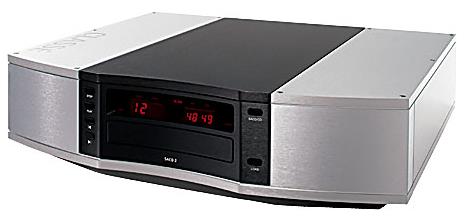


 Brain,
which is a jazz ensemble with Hiromi on piano. It is spectacular, and the
high frequencies are especially notable since much of the music is
electronic. The musicianship is almost beyond belief.
Brain,
which is a jazz ensemble with Hiromi on piano. It is spectacular, and the
high frequencies are especially notable since much of the music is
electronic. The musicianship is almost beyond belief.
